Mane Trimming
ADVICE TO SUCCEED
1. If you choose to trim the mane, it should fit the horse morphology. If he has a frail and thin neck, leave him a mid-long mane to mask defects. On the other hand, on a strong and muscular neck, a very short mane is to be preferred, as it focuses on the neck curve.
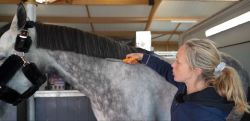
2. We remind you that the scissors cut is to be banned, also on fine manes. Hair should be shortened by hand, with the help of a comb around which you roll the locks, one after the other (see picture on the left/on the right).
3. On the other hand, once the mane is trimmed at its final length, you will use the scissors to level it by "thinning" the hair. It is therefore forbidden to keep the scissors perpendicularly to the mane. On the contrary, it is necessary to proceed by little strokes in the hair direction.
4. When achieving a good manual and eye skill, you can play with optical effects. So, to put the emphasis on the neck, try to trim the mane so that it draws a bow when the horse is placed. Actually, the more you go up towards the head, the longer must be the mane.
5. Avoid shaving or trimming the withers hair too much. Breaking the mane central line makes it unpleasant. In order to keep a harmonious figure, you should prefer gradual layered cuts, especially in the withers area.
6. As the mane, also the forelock must be trimmed by hand and never with scissors. If it is long and thick, you should trim it in symmetrical V-shaped layered cuts, where the V point reaches the mid-line beginning between the two eyes. If the forelock is tousled and short, there’s not much to do, but untangle it without breaking the hair.
THE BRIDLE PATH
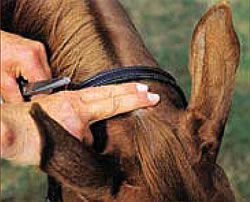
The trimming of the bridle path is to be done during clipping, through the clipper. This area is particularly sensitive as it is near to ears. Climb on a standing stool only if you are sure to be helped or if you are sure about your horse's peace of mind.
LES TRESSES
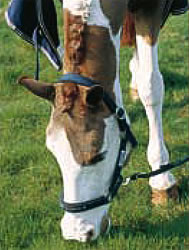
• Braiding
Braids are a prerogative of the great events. You plait to go out in a competition, to take part in a show, shortly to appear great. At home, the hair must breath. Only orthopaedic braids, less tight, are permitted. Following the same aesthetic principle used for mane length, horses with thin or upside-down neck will avoid competition braids.
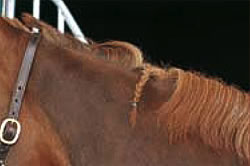
• Orthopaedic braids
If your horse mane remains definitely undisciplined, you can try orthopaedic braids. Less attractive than unruly locks, they however allow putting all mane hair on the same side of the neck, in the prospect of a competition or a show. In order for them to be useful, they should be left on the spot at least three or four days. And to increase the fold, you can dampen them. Remember to remove the braids a day before your competition, otherwise you will be riding a curly horse!
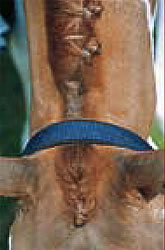
• The forelock
To plait the forelock, do a braid starting from the top of the forelock and taking the hair step by step.